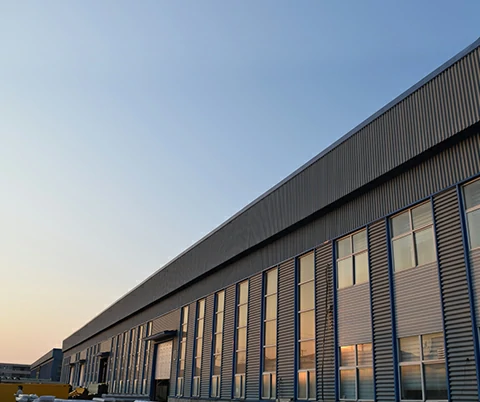loading...
- No. 9, Xingyuan South Street, Dongwaihuan Road, Zaoqiang County, Hengshui, Hebei, China
- admin@zjcomposites.com
- +86 15097380338
- Welcome to visit our website!
grating de frp
The Potential of Fiber Reinforced Plastic (FRP) Grating in Modern Applications
In recent years, the demand for innovative materials in construction and industrial applications has surged. Among these materials, Fiber Reinforced Plastic (FRP) grating has emerged as a popular choice due to its unique characteristics and advantages over traditional materials. This article aims to explore the various aspects of FRP grating, its benefits, applications, and future prospects.
Understanding FRP Grating
FRP grating is composed of a polymer matrix reinforced with fiber, typically glass or carbon. The manufacturing process involves combining these materials to create a composite that exhibits high strength-to-weight ratios, corrosion resistance, and durability. This makes FRP grating an excellent alternative to conventional materials such as steel, aluminum, and wood, particularly in environments subjected to harsh conditions.
Benefits of FRP Grating
1. Corrosion Resistance One of the most significant advantages of FRP grating is its exceptional resistance to corrosion. In chemical processing plants, wastewater treatment facilities, and marine environments, metal grating systems often succumb to rust and degradation. FRP grating, however, can withstand exposure to various chemicals, making it a more reliable choice.
2. Lightweight and High Strength FRP grating is considerably lighter than metal grating while maintaining a high strength level. This characteristic simplifies transportation and installation, reduces labor costs, and minimizes structural load.
3. Safety and Slip Resistance FRP grating often includes surface textures or coatings that enhance slip resistance, making it a safer option for walkways and platforms. This is particularly important in industrial settings where spills may occur.
4. Design Flexibility FRP grating can be manufactured in a variety of shapes, sizes, and colors, allowing for creative and customized design solutions. This flexibility makes it suitable for various architectural applications without compromising structural integrity.
5. Low Maintenance Unlike traditional materials, FRP grating does not require regular painting or treatment to prevent corrosion, which significantly reduces maintenance costs over time. Its longevity contributes to cost-effectiveness in the long run.
Applications of FRP Grating
grating de frp

The versatility of FRP grating enables its use across numerous industries. Common applications include
- Industrial Flooring In factories, refineries, and warehouses, FRP grating provides durable flooring solutions that can resist spills and heavy loads.
- Walkways and Platforms FRP grating is ideal for creating safe walkways and platforms in areas such as power plants, where slip hazards must be minimized.
- Bridge Decking The lightweight nature of FRP grating makes it an excellent choice for bridge decking, where reducing load is essential for structural integrity.
- Marine Applications In ships and offshore platforms, FRP grating is utilized due to its resistance to saltwater and harsh environmental conditions.
- Waste Water Treatment In facilities that require corrosion-resistant materials, FRP grating is employed for catwalks, access platforms, and other applications.
Future Prospects of FRP Grating
As technology advances, the potential for FRP grating continues to grow. Innovations in manufacturing processes and material composition are leading to improved performance characteristics, such as enhanced fire resistance and UV stability. Furthermore, as environmental concerns gain prominence, the development of sustainable FRP materials is gaining traction, appealing to a broader audience.
The construction and industrial sectors are increasingly recognizing the benefits of FRP grating in enhancing safety, reducing maintenance costs, and improving overall efficiency. As awareness of these advantages spreads, FRP grating is likely to see expanded adoption across various applications.
Conclusion
In conclusion, Fiber Reinforced Plastic grating offers a myriad of benefits and applications that make it a superior choice compared to traditional materials. With its light weight, corrosion resistance, and design flexibility, it is well-positioned to meet the demands of modern infrastructure. As industries continue to evolve and seek innovative solutions, FRP grating stands out as a promising material for the future, paving the way for more efficient, safer, and sustainable practices in construction and beyond.
-
The Rise of FRP Profiles: Strong, Lightweight, and Built to LastNewsJul.14,2025
-
SMC Panel Tanks: A Modern Water Storage Solution for All EnvironmentsNewsJul.14,2025
-
GRP Grating: A Modern Solution for Safe and Durable Access SystemsNewsJul.14,2025
-
Galvanized Steel Water Tanks: Durable, Reliable, and Ready for UseNewsJul.14,2025
-
FRP Mini Mesh Grating: The Safer, Smarter Flooring SolutionNewsJul.14,2025
-
Exploring FRP Vessels: Durable Solutions for Modern Fluid HandlingNewsJul.14,2025
-
GRP Structures: The Future of Lightweight, High-Performance EngineeringNewsJun.20,2025
